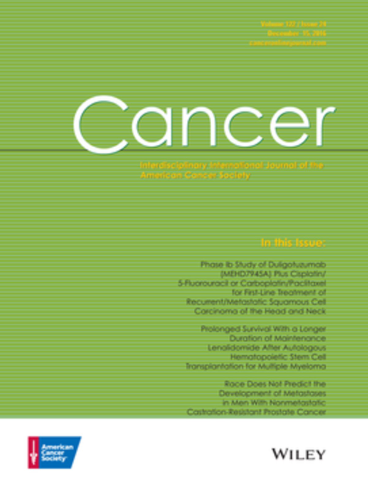Real-world outcomes of neoadjuvant chemoimmunotherapy in patients with nonsmall cell lung cancer: Predictors of surgery, pathologic complete response, and event-free survival
Abstract
Background
Trials of neoadjuvant chemoimmunotherapy (chemoIO) have changed the standard of care for resectable nonsmall cell lung cancer (NSCLC). This study characterizes the outcomes of off-trial patients who received treatment with neoadjuvant chemoIO.
Methods
The authors analyzed records of patients with stage IB–III NSCLC who received neoadjuvant chemoIO with an intent to proceed to surgical resection at three US academic institutions. Clinical, demographic, and pathologic factors were incorporated in univariable and multivariable regression models to identify associations with outcomes (resection status, pathologic complete response [pCR], and subsequent event-free survival [EFS]) after standard-of-care neoadjuvant chemoIO.
Results
Analyses included 115 patients, of whom 63% had stage III disease, 77% completed three cycles of chemoIO, and 78% underwent surgical resection. Ages older than 72 years versus 64 years and younger were associated with not proceeding to surgery in univariable (p = .006) and multivariable (p = .014) regression analyses. Nineteen patients (17%) had tumors with a pCR, and 34 (30%) had a major pathologic response. Positive programmed death-ligand 1 (PD-L1) expression (≥50%; vs. negative PD-L1 expression: odds ratio, 12.1; 95% confidence interval, 2.0–73.7; p = .007) and KRAS mutations (vs. wild-type KRAS: odds ratio, 3.9; 95% confidence interval, 1.07–14.4; p = .039) were associated with a higher probability of pCR in univariable analysis. The median event-free survival was not reached and did not differ among subgroups stratified by key clinical variables.
Conclusions
The results from this study confirm the trial experience of high pCR rates after neoadjuvant chemoIO. This supports the use of chemoIO irrespective of KRAS mutation status, PD-L1 expression, and histology, but suggests that this approach may be less suitable for older patients.




 求助内容:
求助内容: 应助结果提醒方式:
应助结果提醒方式:


